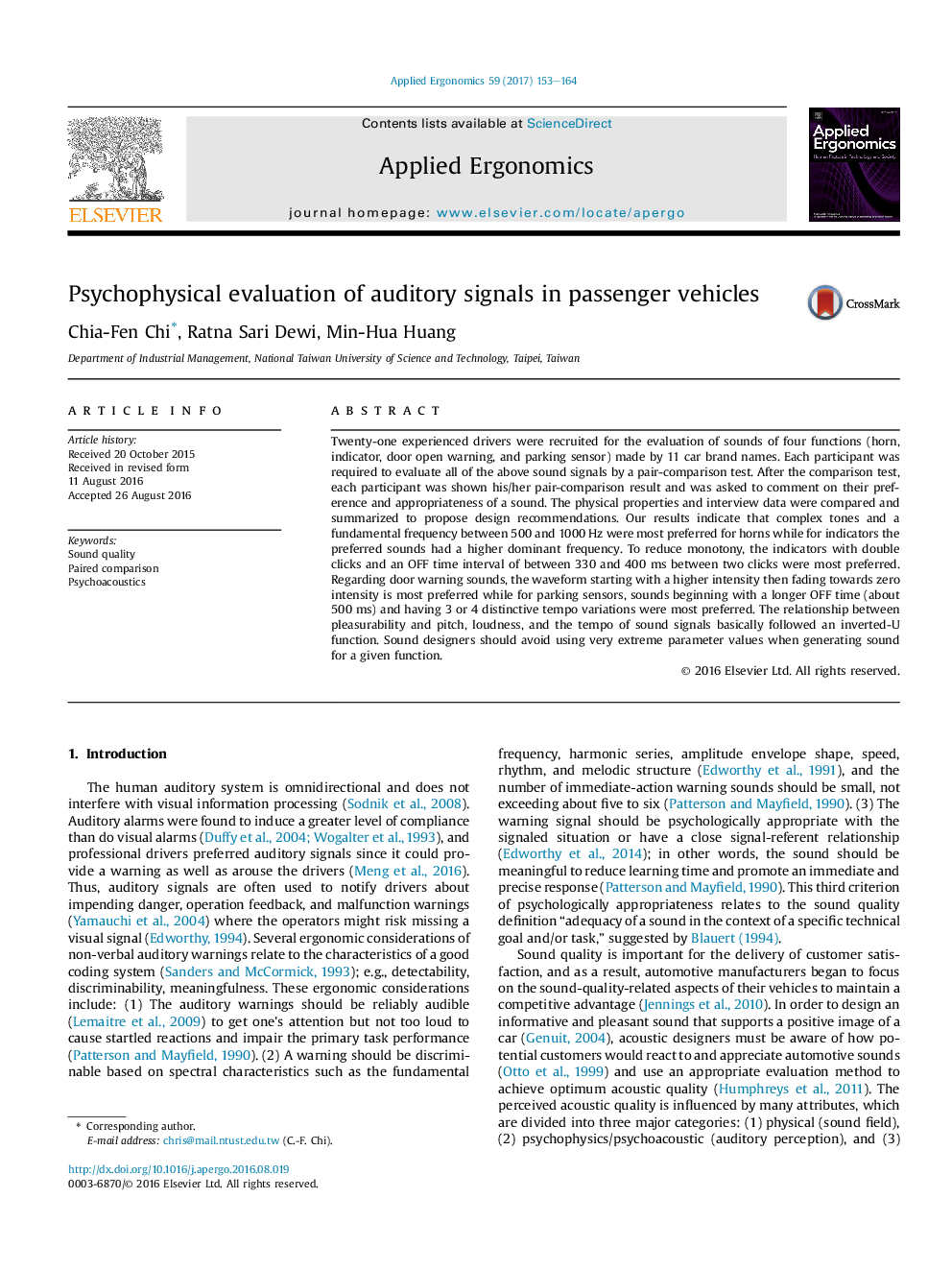| Article ID | Journal | Published Year | Pages | File Type |
|---|---|---|---|---|
| 4972164 | Applied Ergonomics | 2017 | 12 Pages |
Abstract
Twenty-one experienced drivers were recruited for the evaluation of sounds of four functions (horn, indicator, door open warning, and parking sensor) made by 11 car brand names. Each participant was required to evaluate all of the above sound signals by a pair-comparison test. After the comparison test, each participant was shown his/her pair-comparison result and was asked to comment on their preference and appropriateness of a sound. The physical properties and interview data were compared and summarized to propose design recommendations. Our results indicate that complex tones and a fundamental frequency between 500 and 1000Â Hz were most preferred for horns while for indicators the preferred sounds had a higher dominant frequency. To reduce monotony, the indicators with double clicks and an OFF time interval of between 330 and 400Â ms between two clicks were most preferred. Regarding door warning sounds, the waveform starting with a higher intensity then fading towards zero intensity is most preferred while for parking sensors, sounds beginning with a longer OFF time (about 500Â ms) and having 3 or 4 distinctive tempo variations were most preferred. The relationship between pleasurability and pitch, loudness, and the tempo of sound signals basically followed an inverted-U function. Sound designers should avoid using very extreme parameter values when generating sound for a given function.
Related Topics
Physical Sciences and Engineering
Computer Science
Human-Computer Interaction
Authors
Chia-Fen Chi, Ratna Sari Dewi, Min-Hua Huang,
